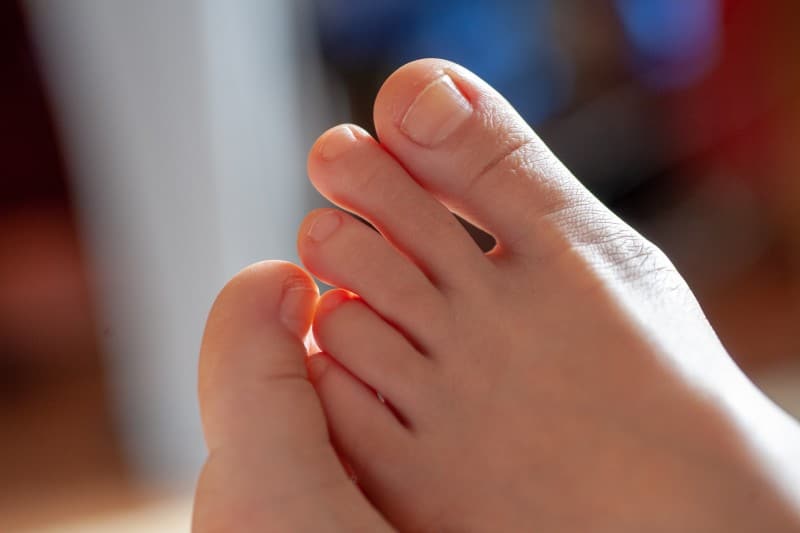Does It Hurt to Walk After Toenail Removal?

Generally, yes, it does hurt to walk after toenail removal. This is because the surgery involves cutting and removing part of the toenail, which can cause pain, inflammation, and tenderness. However, the amount of pain you experience will vary depending on the severity of your ingrown toenail, the type of surgery you had, and your individual pain tolerance.
In most cases, the pain will be mild and manageable with over-the-counter pain medication. You can also help to reduce pain by keeping your foot elevated and resting as much as possible. You should also avoid wearing tight-fitting shoes or shoes that put pressure on your toe.
What to Expect After Toenail Removal
After toenail removal, you can expect to experience some pain, swelling, and redness around your toe. You may also notice some bleeding or drainage from the wound. This is all normal and should improve within a few days.
To help your toe heal properly, it is important to keep it clean and dry. You should wash your toe gently with soap and water once or twice a day. You can also apply a bandage to the wound to help protect it from infection.
You should avoid strenuous activity or putting too much weight on your toe for at least a week after surgery. You may also want to wear open-toed shoes to help your toe breathe.
How to Relieve Pain After Toenail Removal
There are a number of things you can do to relieve pain after toenail removal. These include:
-
Taking over-the-counter pain medication. Acetaminophen (Tylenol) and ibuprofen (Advil, Motrin) are both effective at relieving pain.
-
Applying ice packs to your toe. This can help to reduce swelling and inflammation.
-
Elevating your foot. This will help to reduce blood flow to your toe and may also help to reduce pain.
-
Soaking your toe in warm water. This can help to soothe the pain and promote healing.
If you are experiencing severe pain or if your toe is not healing properly, you should see your doctor.
Related Article: Toenail Removal Healing Stages Pictures
Tips for Preventing Ingrown Toenails
There are a number of things you can do to prevent ingrown toenails, such as:
-
Trimming your toenails straight across. This will help to prevent the corners of your nails from digging into the skin.
-
Not cutting your toenails too short. This can leave your skin vulnerable to infection.
-
Wearing shoes that fit properly. Shoes that are too tight can put pressure on your toes and increase your risk of developing ingrown toenails.
-
Keeping your feet clean and dry. This will help to prevent bacteria from growing under your nails.
If you have a history of ingrown toenails, you should see your doctor regularly for checkups. They can help you to identify and treat ingrown toenails early, before they become a problem.
Conclusion
Toenail removal is a generally safe and effective procedure for treating ingrown toenails. However, it can cause some pain and discomfort. You can help to manage the pain by following the tips in this article. If you have any concerns about toenail removal, you should talk to your doctor.
FAQs:
What’s the deal with toenail removal?
Toenail removal, also known as onychectomy, is a procedure where part or all of a toenail is taken out. It’s usually done to fix ingrown toenails, which are those pesky nails that grow into the skin around your toe.
How do I know if I have an ingrown toenail?
An ingrown toenail is like a party crasher – it’s unwelcome and causes a lot of trouble. Look out for these signs:
-
Pain, redness, and swelling around your toe
-
Pus or drainage from the wound
-
Tenderness when you touch it
-
Trouble squeezing into your shoes
What are the different ways to remove a toenail?
There are two main ways to get rid of an ingrown toenail:
-
Partial onychectomy: This is like a nail trim for your ingrown toenail. Only the ingrown part is removed.
-
Total onychectomy: This is a complete toenail removal, like saying goodbye to that pesky toenail for good.
How do they remove my toenail?
The type of toenail removal you get depends on how bad your ingrown toenail is. Partial onychectomy is usually done with a local anesthetic, which means you’ll be numb but awake. Total onychectomy might use local or general anesthesia, depending on the situation.
How long will it take for my toe to heal?
It usually takes 4 to 6 weeks for your toe to fully heal after toenail removal. During this time, take it easy and avoid activities that put too much pressure on your toe. Keep your toe clean and dry, and opt for open-toed shoes.
When should I see a doctor about my ingrown toenail?
If your ingrown toenail is causing major pain, redness, or swelling, it’s time to see a doctor. Also, head to the doctor if your toe is draining pus or if you have diabetes or other health conditions that can affect wound healing.

